Music Source Separation
Music source separation is the process of separating individual sound sources from a mixed audio signal.
Papers and Code
SynthSOD: Developing an Heterogeneous Dataset for Orchestra Music Source Separation
Sep 17, 2024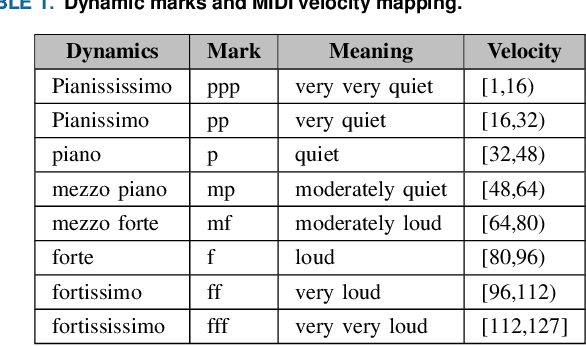
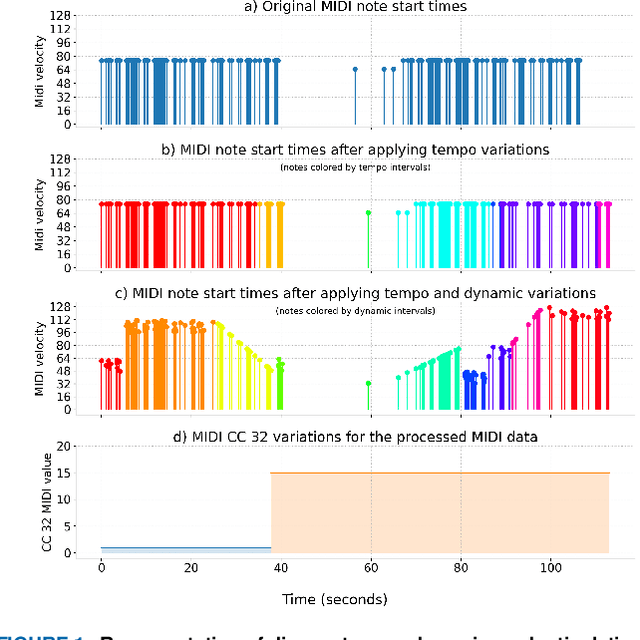
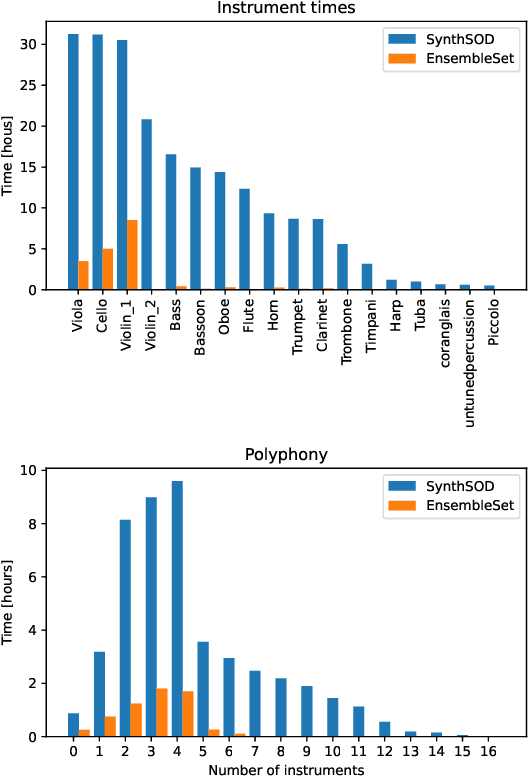
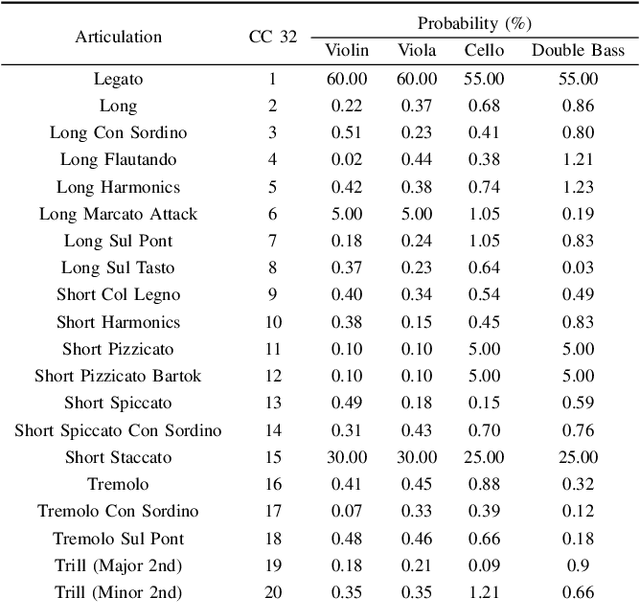
Recent advancements in music source separation have significantly progressed, particularly in isolating vocals, drums, and bass elements from mixed tracks. These developments owe much to the creation and use of large-scale, multitrack datasets dedicated to these specific components. However, the challenge of extracting similarly sounding sources from orchestra recordings has not been extensively explored, largely due to a scarcity of comprehensive and clean (i.e bleed-free) multitrack datasets. In this paper, we introduce a novel multitrack dataset called SynthSOD, developed using a set of simulation techniques to create a realistic (i.e. using high-quality soundfonts), musically motivated, and heterogeneous training set comprising different dynamics, natural tempo changes, styles, and conditions. Moreover, we demonstrate the application of a widely used baseline music separation model trained on our synthesized dataset w.r.t to the well-known EnsembleSet, and evaluate its performance under both synthetic and real-world conditions.
A Two-Stage Band-Split Mamba-2 Network for Music Separation
Sep 10, 2024



Music source separation (MSS) aims to separate mixed music into its distinct tracks, such as vocals, bass, drums, and more. MSS is considered to be a challenging audio separation task due to the complexity of music signals. Although the RNN and Transformer architecture are not perfect, they are commonly used to model the music sequence for MSS. Recently, Mamba-2 has already demonstrated high efficiency in various sequential modeling tasks, but its superiority has not been investigated in MSS. This paper applies Mamba-2 with a two-stage strategy, which introduces residual mapping based on the mask method, effectively compensating for the details absent in the mask and further improving separation performance. Experiments confirm the superiority of bidirectional Mamba-2 and the effectiveness of the two-stage network in MSS. The source code is publicly accessible at https://github.com/baijinglin/TS-BSmamba2.
Automatic Estimation of Singing Voice Musical Dynamics
Oct 27, 2024



Musical dynamics form a core part of expressive singing voice performances. However, automatic analysis of musical dynamics for singing voice has received limited attention partly due to the scarcity of suitable datasets and a lack of clear evaluation frameworks. To address this challenge, we propose a methodology for dataset curation. Employing the proposed methodology, we compile a dataset comprising 509 musical dynamics annotated singing voice performances, aligned with 163 score files, leveraging state-of-the-art source separation and alignment techniques. The scores are sourced from the OpenScore Lieder corpus of romantic-era compositions, widely known for its wealth of expressive annotations. Utilizing the curated dataset, we train a multi-head attention based CNN model with varying window sizes to evaluate the effectiveness of estimating musical dynamics. We explored two distinct perceptually motivated input representations for the model training: log-Mel spectrum and bark-scale based features. For testing, we manually curate another dataset of 25 musical dynamics annotated performances in collaboration with a professional vocalist. We conclude through our experiments that bark-scale based features outperform log-Mel-features for the task of singing voice dynamics prediction. The dataset along with the code is shared publicly for further research on the topic.
RobustSVC: HuBERT-based Melody Extractor and Adversarial Learning for Robust Singing Voice Conversion
Sep 10, 2024



Singing voice conversion (SVC) is hindered by noise sensitivity due to the use of non-robust methods for extracting pitch and energy during the inference. As clean signals are key for the source audio in SVC, music source separation preprocessing offers a viable solution for handling noisy audio, like singing with background music (BGM). However, current separating methods struggle to fully remove noise or excessively suppress signal components, affecting the naturalness and similarity of the processed audio. To tackle this, our study introduces RobustSVC, a novel any-to-one SVC framework that converts noisy vocals into clean vocals sung by the target singer. We replace the non-robust feature with a HuBERT-based melody extractor and use adversarial training mechanisms with three discriminators to reduce information leakage in self-supervised representations. Experimental results show that RobustSVC is noise-robust and achieves higher similarity and naturalness than baseline methods in both noisy and clean vocal conditions.
Source Separation of Multi-source Raw Music using a Residual Quantized Variational Autoencoder
Aug 12, 2024I developed a neural audio codec model based on the residual quantized variational autoencoder architecture. I train the model on the Slakh2100 dataset, a standard dataset for musical source separation, composed of multi-track audio. The model can separate audio sources, achieving almost SoTA results with much less computing power. The code is publicly available at github.com/LeonardoBerti00/Source-Separation-of-Multi-source-Music-using-Residual-Quantizad-Variational-Autoencoder
SoundSignature: What Type of Music Do You Like?
Oct 04, 2024SoundSignature is a music application that integrates a custom OpenAI Assistant to analyze users' favorite songs. The system incorporates state-of-the-art Music Information Retrieval (MIR) Python packages to combine extracted acoustic/musical features with the assistant's extensive knowledge of the artists and bands. Capitalizing on this combined knowledge, SoundSignature leverages semantic audio and principles from the emerging Internet of Sounds (IoS) ecosystem, integrating MIR with AI to provide users with personalized insights into the acoustic properties of their music, akin to a musical preference personality report. Users can then interact with the chatbot to explore deeper inquiries about the acoustic analyses performed and how they relate to their musical taste. This interactivity transforms the application, acting not only as an informative resource about familiar and/or favorite songs, but also as an educational platform that enables users to deepen their understanding of musical features, music theory, acoustic properties commonly used in signal processing, and the artists behind the music. Beyond general usability, the application also incorporates several well-established open-source musician-specific tools, such as a chord recognition algorithm (CREMA), a source separation algorithm (DEMUCS), and an audio-to-MIDI converter (basic-pitch). These features allow users without coding skills to access advanced, open-source music processing algorithms simply by interacting with the chatbot (e.g., can you give me the stems of this song?). In this paper, we highlight the application's innovative features and educational potential, and present findings from a pilot user study that evaluates its efficacy and usability.
SonicSim: A customizable simulation platform for speech processing in moving sound source scenarios
Oct 02, 2024


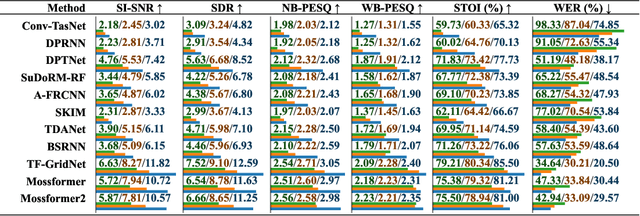
The systematic evaluation of speech separation and enhancement models under moving sound source conditions typically requires extensive data comprising diverse scenarios. However, real-world datasets often contain insufficient data to meet the training and evaluation requirements of models. Although synthetic datasets offer a larger volume of data, their acoustic simulations lack realism. Consequently, neither real-world nor synthetic datasets effectively fulfill practical needs. To address these issues, we introduce SonicSim, a synthetic toolkit de-designed to generate highly customizable data for moving sound sources. SonicSim is developed based on the embodied AI simulation platform, Habitat-sim, supporting multi-level adjustments, including scene-level, microphone-level, and source-level, thereby generating more diverse synthetic data. Leveraging SonicSim, we constructed a moving sound source benchmark dataset, SonicSet, using the Librispeech, the Freesound Dataset 50k (FSD50K) and Free Music Archive (FMA), and 90 scenes from the Matterport3D to evaluate speech separation and enhancement models. Additionally, to validate the differences between synthetic data and real-world data, we randomly selected 5 hours of raw data without reverberation from the SonicSet validation set to record a real-world speech separation dataset, which was then compared with the corresponding synthetic datasets. Similarly, we utilized the real-world speech enhancement dataset RealMAN to validate the acoustic gap between other synthetic datasets and the SonicSet dataset for speech enhancement. The results indicate that the synthetic data generated by SonicSim can effectively generalize to real-world scenarios. Demo and code are publicly available at https://cslikai.cn/SonicSim/.
A Stem-Agnostic Single-Decoder System for Music Source Separation Beyond Four Stems
Jun 26, 2024Despite significant recent progress across multiple subtasks of audio source separation, few music source separation systems support separation beyond the four-stem vocals, drums, bass, and other (VDBO) setup. Of the very few current systems that support source separation beyond this setup, most continue to rely on an inflexible decoder setup that can only support a fixed pre-defined set of stems. Increasing stem support in these inflexible systems correspondingly requires increasing computational complexity, rendering extensions of these systems computationally infeasible for long-tail instruments. In this work, we propose Banquet, a system that allows source separation of multiple stems using just one decoder. A bandsplit source separation model is extended to work in a query-based setup in tandem with a music instrument recognition PaSST model. On the MoisesDB dataset, Banquet, at only 24.9 M trainable parameters, approached the performance level of the significantly more complex 6-stem Hybrid Transformer Demucs on VDBO stems and outperformed it on guitar and piano. The query-based setup allows for the separation of narrow instrument classes such as clean acoustic guitars, and can be successfully applied to the extraction of less common stems such as reeds and organs. Implementation is available at https://github.com/kwatcharasupat/query-bandit.
Facing the Music: Tackling Singing Voice Separation in Cinematic Audio Source Separation
Aug 07, 2024Cinematic audio source separation (CASS) is a fairly new subtask of audio source separation. A typical setup of CASS is a three-stem problem, with the aim of separating the mixture into the dialogue stem (DX), music stem (MX), and effects stem (FX). In practice, however, several edge cases exist as some sound sources do not fit neatly in either of these three stems, necessitating the use of additional auxiliary stems in production. One very common edge case is the singing voice in film audio, which may belong in either the DX or MX, depending heavily on the cinematic context. In this work, we demonstrate a very straightforward extension of the dedicated-decoder Bandit and query-based single-decoder Banquet models to a four-stem problem, treating non-musical dialogue, instrumental music, singing voice, and effects as separate stems. Interestingly, the query-based Banquet model outperformed the dedicated-decoder Bandit model. We hypothesized that this is due to a better feature alignment at the bottleneck as enforced by the band-agnostic FiLM layer. Dataset and model implementation will be made available at https://github.com/kwatcharasupat/source-separation-landing.
Learning Source Disentanglement in Neural Audio Codec
Sep 17, 2024



Neural audio codecs have significantly advanced audio compression by efficiently converting continuous audio signals into discrete tokens. These codecs preserve high-quality sound and enable sophisticated sound generation through generative models trained on these tokens. However, existing neural codec models are typically trained on large, undifferentiated audio datasets, neglecting the essential discrepancies between sound domains like speech, music, and environmental sound effects. This oversight complicates data modeling and poses additional challenges to the controllability of sound generation. To tackle these issues, we introduce the Source-Disentangled Neural Audio Codec (SD-Codec), a novel approach that combines audio coding and source separation. By jointly learning audio resynthesis and separation, SD-Codec explicitly assigns audio signals from different domains to distinct codebooks, sets of discrete representations. Experimental results indicate that SD-Codec not only maintains competitive resynthesis quality but also, supported by the separation results, demonstrates successful disentanglement of different sources in the latent space, thereby enhancing interpretability in audio codec and providing potential finer control over the audio generation process.
 Add to Chrome
Add to Chrome Add to Firefox
Add to Firefox Add to Edge
Add to Edge